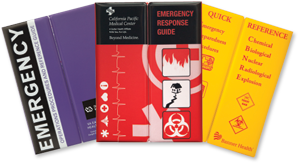Written by: Campus Safety Staff
The Naval Postgraduate School‘s Center for Homeland Defense and Security (CHDS), in conjunction with the Federal Emergency Management Agency (FEMA), maintains a K-12 school shooting database project as part of their Advanced Thinking in Homeland Security program. They found the need for accurate, detailed information on this subject was paramount to campus safety.
The database documents every instance a gun is brandished, fired, or a bullet hits school property for any reason, regardless of the number of victims, time, day of the week, or reason. You can find the entire database here but we will highlight some of the important findings below.
As we continue through the pandemic and most schools have returned to in-person learning, it is important to note that experts have voiced significant concerns over the number of incidents of gun-related violence so far in 2022. Mental health concerns among young people have skyrocketed and many weapons have been confiscated from schools.
K-12 School Shooting Statistics
The school shooting data below includes stats from 1970 to 2021. Partial 2022 data can be found on the CHDS website.
- There have been 1,924 school shooting incidents since 1970.
- 2021 had the greatest number of incidents, with 249. The next highest year was 2019 with 119.
- Since 1970, 637 people have died in shootings at schools. Additionally, 1,734 were injured and 73 suffered minor injuries.
- 2018 was the year with the highest number of people killed, including the shooter, with 51 killed. This was the year of the Marjory Stoneman Douglas shooting, which claimed 17 lives.
- California, Texas and Florida are the states with the most incidents.
- 1,086 incidents occurred outside on school property and 672 occurred solely inside a school building.
- The most common location for a school shooting is in a parking lot (21.8%), followed by a classroom (10.3%)
- Most school shootings (18.4%) occurred in the morning, followed by at a sporting event (10.2%) or during afternoon classes (10.1%).
- 685 incidents were the result of an escalated dispute (37.1%).
- 515 victims were females and 1,729 were males.
- The most common time of year for a school shooting is in the fall.
The CHDS has compiled all of their K-12 school shooting statistics in graphs, tables and charts.
We put together a slideshow of these graphs for you to view here. Each slide has a link to an interactive map with more detailed information.
K-12 School Shooter Statistics
Here are some statistics specific to the shooters:
- In 887 incidents (43.1%), the shooter was a current student at the school.
- 409 shooters (19.9%) had no school affiliation.
- In 1,259 incidents, there was one shooter.
- The shooter was male in 1,737 incidents and female in 79.
- In 984 incidents, the shooter targeted specific victims. In 278 incidents, the victim(s) were random.
- In 217 incidents, the shooter died, largely from suicide (86%).
- The most commonly used weapon was a handgun or multiple handguns, which were used in 1,344 incidents. A rifle or multiple rifles were used in 107 incidents.
- The most common age of a shooter is 17, followed by 16 and 15.
What Defines a School Shooting?
To gather detailed and accurate data, the CHDS had to come up with a definition of a school shooting to decide which incidents made it into the database. Their definition is any time “a gun is brandished, is fired, or a bullet hits school property for any reason, regardless of the number of victims (including zero), time, day of the week, or reason.”
Some criteria questions to consider when determining if an incident is actually a school shooting are:
- Did the shooting occur at a location defined as an educational institute for children?
- Does it need to be inside a school building on school property?
- Are shootings that occur on school buses considered a school shooting?
- Is a student committing suicide with a firearm inside the school considered a school shooting?
- Do there need to be victims in order for it to be classified as a school shooting?
- What if non-students shoot at other non-students and the bullet hits a student bystander?
The CHDS says choosing to include or exclude factors like these can directly affect the statistical narrative on school shootings. Through exclusion, fewer incidents will be reported. Partial or incomplete inclusion will increase the number of reported incidents.
Research & Methodology
After defining what a school shooting was, the CHDS followed a four-step process to populate the school shooting database.
1. Database Compilation and Preliminary Research
An open-source analysis was conducted to determine all of the available data on school shootings. After reviewing the existing data, the information from each of the different databases was compiled into a single spreadsheet.
2. Detailed Research
Newspaper archives were frequently used to find accurate information on school shootings, although some would only give the school name, shooter’s name, or victim’s name. Cross-referencing the information from multiple newspaper articles provided the most open-source information and best corroboration reasonably available.
To assist in identifying data and sorting information, a set of categories were established to provide context for the cause of the shooting. The top categories can be found in the chart below. The full interactive chart can be found here.
(Graphic Credit: CHDS)
3. Reliability Score and Validation of Research with Official Documents
The information in the database is open-source from online and print news. The validity of the information about each incident was quantified with a reliability score of one to five (five being the most reliable).
- Blogs
- Single newspaper article or online news report
- Multiple news sources
- Hundreds of news sources or statements/interviews from law enforcement officials
- Court records or police report
4. Validation with Official Sources
The goal is to have every incident in the database have a reliability score of five. Each of the school shootings in the database includes a date, school name, city, and state.
Now view the slideshow here.
Beginning the process of addressing the potential threat of a shooter at your school can be overwhelming. Here are some resources to help.
Disclaimer from CHDS website: This is an official Department of the Navy (DON) Web site (Government Information Locator Service Number: DOD-TBD-001923). This information service is provided by the Naval Postgraduate School (NPS) for the public viewing and retrieving of information. Unless otherwise indicated, information on this service represents official, unclassified NPS, DON, or Department of Defense (DOD) policies or positions.
This article, originally published in 2018, has been updated to reflect current statistics.
While this data is important and may be intimidating, we want to emphasize that active shooter events in schools are still extremely rare. There are many layers to keeping schools secure and students and staff safe. Active shooter response should only be part of your campus safety plan — not all of it.
This article appeared on Campus Safety News and is shared with consent: https://www.campussafetymagazine.com/safety/k-12-school-shooting-statistics-everyone-should-know/







